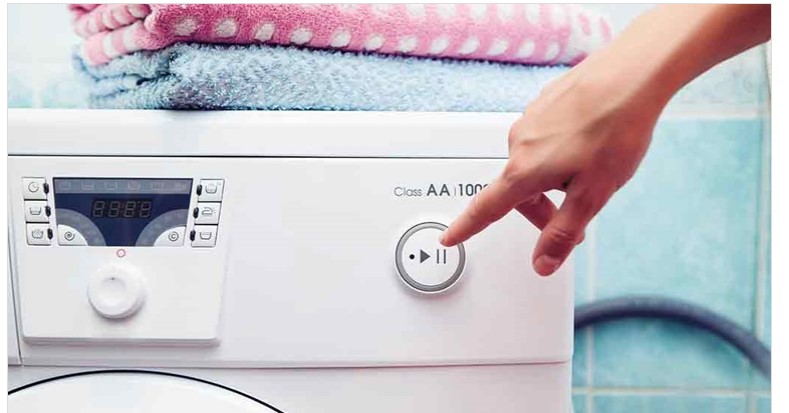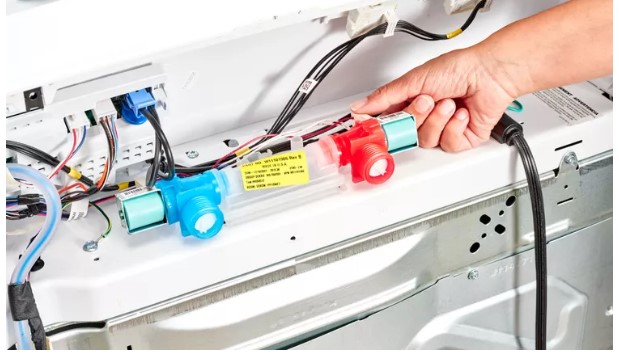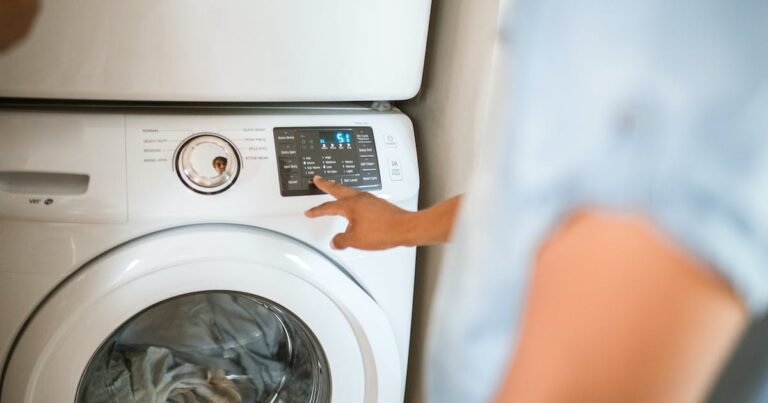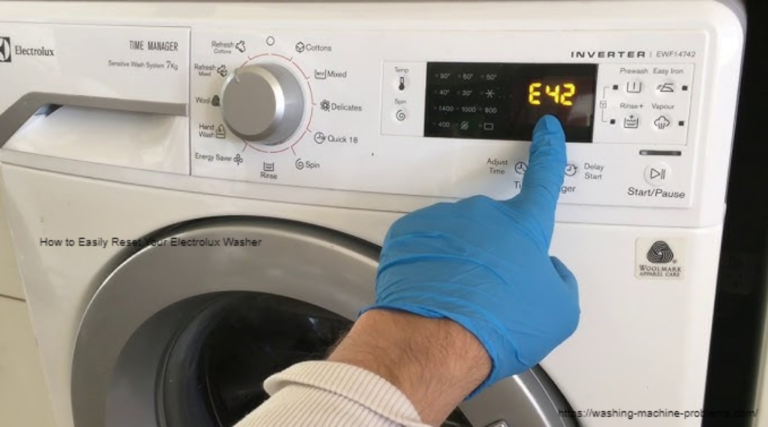How Long Can Washing Machines Stay Unused?

Hey there, faithful readers! Are you someone who loves collecting vintage appliances? Or are you prepping your bug-out bunker and stocking up on backups? If so, you, my friend, have come to the right place. In this article, I will discuss all the dirty details of how long washing machines can survive in storage before they go kaput. We’ll cover everything from drying out hoses and pumps to keeping motors and belts in working order. I’ll even share some pro tips on how to prep your washer for long-term hibernation. And for all you fact fanatics, stay tuned for a lightning round of FAQs at the end. Let’s dive in and keep those classic Maytags spinning! Whether you’re a homesteader, homeowner, or just curious, you will want to take advantage of this deep dive into washer longevity. The countdown to clean clothes continues, so grab some suds, and let’s get started!
How Long Can a Washing Machine Sit Unused Before It’s Damaged?

As an appliance enthusiast, I can’t imagine not using my trusty washing machine for an extended period! However, sometimes life happens, and our washers end up sitting idle. The good news is that most standard washers can handle a temporary break just fine.
A Few Weeks to a Month
Suppose you’re going away on vacation or have a short-term reason for not doing laundry. Your washer should be perfectly safe and unused for a few weeks to a month. I recommend running a quick rinse cycle before your trip and leaving the door open to air it out. When you return, run another rinse cycle to freshen it up, and you’ll be ready to wash again with no issues.
2-6 Months
For longer spans of 2 to 6 months without use, it’s a good idea to take some extra precautions. Fill the drum with water and add a cup of bleach to prevent mold and mildew growth, then run a hot wash cycle. After draining, leave the door open to ventilate and dry thoroughly. It would help if you also considered unplugging the washer to avoid potential fire hazards from being unused for an extended time.
Longer than 6 Months
If your washing machine sits for longer than 6 months, there are risks of damage or malfunction when you use it again. Rubber seals and hoses can start to crack or show wear, and components may seize up from lack of use. It’s best to have an appliance technician service your washer before rerunning it. They can inspect for any issues, replace worn or damaged parts, and ensure they function correctly so you can feel confident doing laundry again!
What Happens to a Washing Machine That Sits Idle for Too Long?
As an appliance enthusiast, nothing excites me more than a high-tech washer! However, if you leave these mechanical wonders sitting too long, several issues can crop up.
Mold and mildew growth
After just a few days of sitting idle, mold and mildew can start growing in dark, damp areas of the washer, like the rubber seal around the door. Yuck! Not only does this create a musty smell, but it can also spread to your clothes during the next wash. To prevent this, leave the washer door open to air it out when not in use and run a hot wash cycle with 2 cups of white vinegar once a month.
Rust and corrosion
Over time, moisture trapped inside the washer leads to rust and corrosion of internal parts like the drum, pumps, valves, and hoses. This damage can reduce the lifespan of your washer and even cause leaks. The solution? Run a quick rinse cycle with 2 cups of white vinegar every few weeks to prevent standing water.
Frozen or seized parts
If a washer sits inactive during winter or in an unheated area like a garage, parts like pumps, valves, and hoses can freeze or seize up. Once thawed, these parts may no longer function properly. The best way to avoid this is to winterize your washer by draining all water and hoses and leaving the door in a temperature-controlled area.
Costly repairs
The longer a washer sits unused, the higher the chance of needing expensive repairs or total replacement due to rust, mold, mildew, or frozen parts. By performing regular maintenance like running rinse cycles, cleaning seals and hoses, and ensuring proper storage conditions, you can keep your washer in working order for many years. An ounce of prevention is worth a pound of cure!
How to Maintain Your Washing Machine During Long Periods of Disuse

Yay, I finally get to share how I keep my trusty washing machine in tip-top shape even when I’m not using it for a while! As an avid traveler, I sometimes stay home for weeks or months. But when I return, my washing machine is always ready to clean my dirty laundry.
Run a hot wash cycle.
Before leaving on an extended trip, I like to run a hot wash cycle with 2 cups of white vinegar. The vinegar helps disinfect the washer and remove any built-up detergent residue. It also prevents musty smells from developing while I’m gone. I pour the vinegar into the detergent dispenser and run the hottest setting possible with an empty load. My washer smells fresh and is squeaky clean when I get back!
Leave the door open.
After the vinegar wash, I open the washer door to allow air circulation inside the drum. This is key to preventing mildew growth in a humid environment. I also unplugged the washer for safety since the door will be open for a long time. As an added precaution against energy vampires, I turn off the switch on the outlet itself.
Use washing machine cleaners.
For washers that are idle for 3 months or more, washing machine cleaners can provide an extra layer of protection. These commercial cleaners disinfect and deodorize the washer interior to prevent the buildup of residue, grime, and smells during extended downtime. Just run one cycle with the cleaner according to the directions before leaving.
When I return from my adventures, my trusty washer is ready to return to business as usual. After a quick inspection to ensure there are no leaks or damage, it’s time for the first joyful load of laundry in my sparkling clean machine! Taking these few simple steps means my washer will serve me well for years.
Tips for Restarting an Unused Washing Machine After Storage
I was so excited when my new apartment came with a washer and dryer—until I realized the previous tenants hadn’t used them for ages! If your washing machine has been sitting idle for a while, don’t worry. With some TLC, you can get it up and running again quickly.
First, run a hot wash cycle with two cups of white vinegar. The vinegar will help remove any musty smells and sanitize the washer. Once that’s done, run another hot wash with two cups of baking soda to freshen it up. Your washer will be sparkling clean and odor-free!
Next, check and clean the water hoses. If they’re old or damaged, replace them. You don’t want any leaks! Also, wipe down the rubber seal around the door to remove any mildew.
Now for a test run. Add a few towels and run a normal wash cycle with detergent to ensure everything works properly before doing a full load. If you notice the washer is off balance or making strange noises, it may need servicing. But chances are it just needed to be dusted off from sitting idle!
The most important thing is to use your washer regularly to prevent it from sitting unused again. I do a load two or three times a week, so my washer stays in tip-top shape. If you go on vacation, have a friend or neighbor run an empty hot wash cycle once a week. Your washer—and your clothes—will thank you!
With some cleaning, TLC, and regular use, an unused washer can return to working order quickly. Remember, your laundry will be fresh and clean again before you know it! Now, if only I could figure out how to restart that unused dryer…

FAQs: How Long Can a Washing Machine Sit Unused Before Problems Occur?
Let me tell you, as an avid washer and dryer user, leaving your trusty washing machine alone for a short time can lead to some severe issues. But don’t worry; with proper care and maintenance, you can ensure your washer will be ready to tackle loads of laundry after being unused for a while.
How long is too long?
In general, if your washer is unused for 2-4 weeks, running a quick rinse cycle should be acceptable before the first load of laundry. However, you’ll want to take extra precautions if anything is over a month of non-use. The main concerns are mold and mildew building up inside the drum and hoses and rust forming on metal parts.
What should I do to prepare it for storage?
First, run a hot wash cycle with 2 cups of white vinegar to sanitize the interior and remove musty smells. Next, open the washer door to allow air circulation and prevent excess moisture buildup. Disconnecting the hoses and leaving them open to dry completely is also a good idea. Once everything is dry, you can close up the washer for storage.
What about when I’m ready to use it again?
When you’re ready to bring your washer out of retirement, reconnect the hoses and run a rinse cycle with 2 cups of vinegar, followed by a regular hot wash cycle before washing clothes. This will remove any built-up residue and ensure your machine is clean and working correctly. Before running a load, it’s also wise to check that the hoses and seals aren’t cracked or damaged.
With some preventative cleaning and care, a washing machine can typically sit unused for 2-3 months before significant problems develop. But keep it active for the best results for 4-6 weeks. If properly maintained, your trusty washer should provide many years of dependable service and clean clothes!
Conclusion
Wow, after learning all that, my mind is spinning like a washing machine on the high cycle! Who knew leaving your washer unused for too long could cause many problems? From mold and mildew growth to mechanical failures, it’s clear that these appliances need to be spun regularly. While manufacturers recommend at least monthly use, letting it sit idle for just two weeks can allow moisture and gunk to build up. Yuck! So do yourself and your washer a favor and set a reminder to run it empty or with towels if you’re headed out of town. Your nose and wallet will thank you later. And if you end up with a funky washer, don’t despair – a little elbow grease and cleaning solutions can get it fresh and clean again. Now, let’s use those washers, people!







